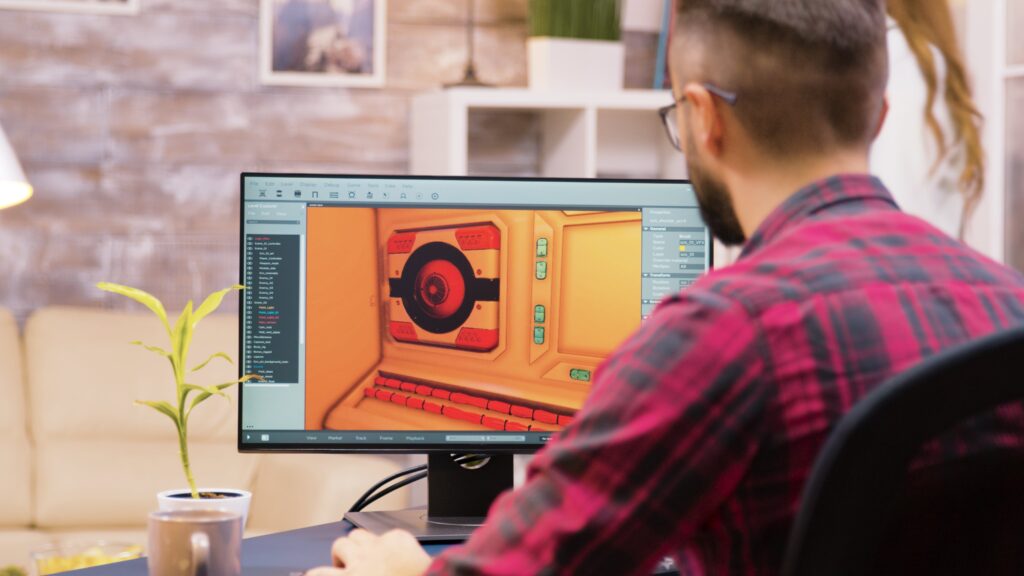Are you passionate about bringing characters and creatures to life in the world of animation? If so, pursuing a career as a Rigging Artist could be the perfect fit for you. Rigging Artists play a crucial role in the animation industry by creating the skeletal structure of 3D models, allowing them to move and come alive on screen.
In this comprehensive guide, we will explore what it takes to become a successful Rigging Artist, the skills required for the job, career prospects in the industry, and tips for breaking into this exciting field.
1. Understanding the Role of a Rigging Artist
Before diving into the specifics of becoming a Rigging Artist, it’s essential to understand the role and responsibilities that come with this position. Rigging Artists are responsible for creating the digital skeletons, or rigs, of characters and objects in a 3D environment. These rigs serve as the framework that animators use to bring movement and expression to characters in animated films, video games, and other forms of media.
Rigging Artists work closely with animators and modelers to ensure that the rigs they create are functional and allow for realistic movement. They must have a strong understanding of anatomy, physics, and movement to create rigs that accurately reflect how objects and characters would move in the real world.
2. Skills Required for Rigging Artists
To excel as a Rigging Artist, you will need a combination of technical skills, artistic abilities, and attention to detail. Some of the key skills required for this role include:
- Proficiency in 3D animation software such as Autodesk Maya, Blender, or Cinema 4D
- Strong understanding of anatomy and physics
- Knowledge of scripting languages like Python for creating custom tools and automating tasks
- Ability to work collaboratively with animators, modelers, and other team members
- Attention to detail and problem-solving skills to troubleshoot rigging issues
- Creativity and artistic vision to bring characters to life through movement
By honing these skills and continuously learning and improving your craft, you can position yourself as a valuable asset in the competitive field of animation.
3. Education and Training
While formal education is not always a requirement for becoming a Rigging Artist, pursuing a degree or certificate in animation, computer graphics, or a related field can provide you with the foundational knowledge and skills needed to succeed in this role. Institutions like New York University (NYU) offer programs in animation and digital arts that can help you build a strong portfolio and network with industry professionals.
Additionally, online platforms like Yellowbrick provide courses specifically tailored to aspiring animators and Rigging Artists, offering valuable insights and hands-on training to kickstart your career in the animation industry.
4. Building Your Portfolio
One of the most important aspects of breaking into the animation industry as a Rigging Artist is building a strong portfolio that showcases your skills and creativity. Your portfolio should include examples of your rigging work, demonstrating your ability to create rigs that are functional, realistic, and visually appealing.
Consider including a variety of projects in your portfolio, such as character rigs, mechanical rigs, and creature rigs, to showcase your versatility and range as a Rigging Artist. Make sure to keep your portfolio up to date and continually add new projects to demonstrate your growth and development as an artist.
5. Career Prospects for Rigging Artists
Rigging Artists are in high demand in the animation industry, with opportunities available in film, television, video games, and advertising. As technology continues to advance and the demand for high-quality animation grows, the need for skilled Rigging Artists will only increase.
Some of the top job titles you can pursue as a Rigging Artist include:
- Character TD: Focus on creating complex character rigs, ensuring characters move naturally and respond realistically in various animation scenarios.
- Rigging Supervisor: Oversee a team of rigging artists, managing the rigging process across multiple characters or projects, and ensuring consistency and quality.
- Technical Animator: Blend rigging with animation to troubleshoot and refine character motion, ensuring seamless integration between rigging and animating phases.
- Creature TD: Specialise in rigging and simulating non-human creatures, from animals to fantastical beings, with a focus on realistic movement and behavior.
- Rigging Lead: Lead the rigging team on large-scale projects, coordinating efforts and setting technical standards for character rigs.
- Facial Rigger: Develop detailed facial rigs that allow for nuanced and expressive character performances, crucial for conveying emotion in animation.
- Rigging Artist: Create and implement character rigs that define how digital models move, providing the framework for animators to bring characters to life.
- Rigging Developer: Focus on creating tools and scripts that automate and enhance the rigging process, improving efficiency and innovation in rigging workflows.
- Rigging TD (Technical Director): Serves as a bridge between the rigging team and other departments, troubleshooting and solving technical challenges that arise during production.
- Rigging Pipeline TD: Develop and maintain the rigging pipeline, ensuring that rigging processes integrate smoothly with other aspects of production, such as modeling, animation, and rendering.
These roles offer varying levels of responsibility and specialization, allowing you to carve out a niche within the animation industry that aligns with your interests and strengths as a Rigging Artist.
6. Tips for Success
To succeed as a Rigging Artist, it’s essential to stay current with industry trends, continuously improve your skills, and network with other professionals in the field. Attend industry events, workshops, and conferences to stay connected with the latest developments in animation technology and techniques.
Additionally, consider joining online communities and forums dedicated to animation and rigging to connect with other artists, share knowledge, and seek feedback on your work. Building a strong network of peers and mentors can provide valuable support and guidance as you navigate your career as a Rigging Artist.
Key Takeaways:
- Becoming a successful Rigging Artist requires a blend of technical skills, artistic talents, and a deep understanding of anatomy and physics.
- Hone your abilities in 3D animation software, scripting languages, and collaborative work to excel in this dynamic field.
- Education and training are vital for preparing for a career as a Rigging Artist; while formal education is beneficial, online platforms like Yellowbrick offer specialized courses for aspiring animators and Rigging Artists.
- Build a strong portfolio showcasing your rigging work, including a variety of projects to demonstrate versatility and creativity, and continuously update it to reflect your growth and skills.
- The animation industry offers diverse career prospects for Rigging Artists in film, television, video games, and advertising.
- Stay current with industry trends, network with professionals, and seek feedback from peers to position yourself for success in this competitive field.
Considering the ever-evolving nature of the animation industry, continuous learning and skill improvement are key to thriving as a Rigging Artist. To further enhance your knowledge and skills, consider exploring the NYU Animation Industry Essentials online course and certificate program, offered to help you stay ahead in the dynamic world of animation.








